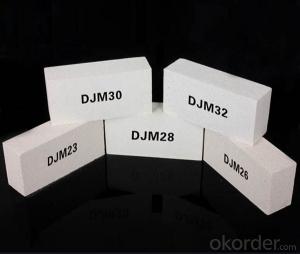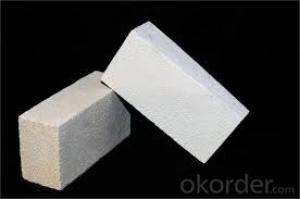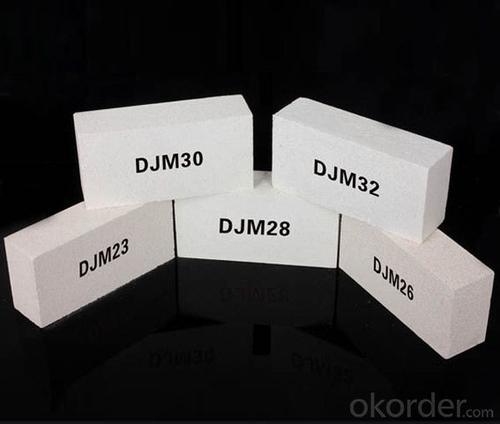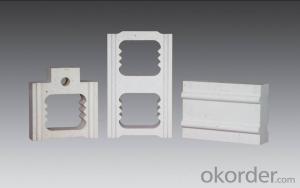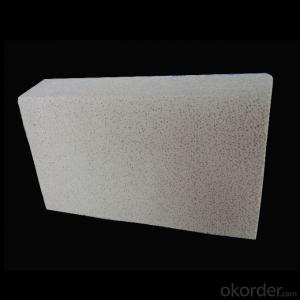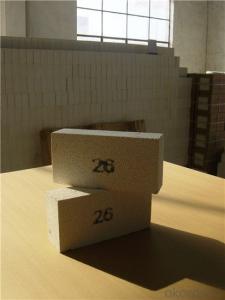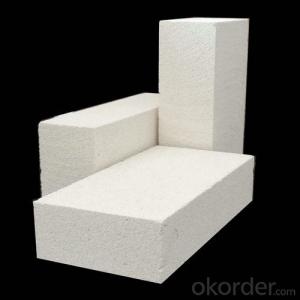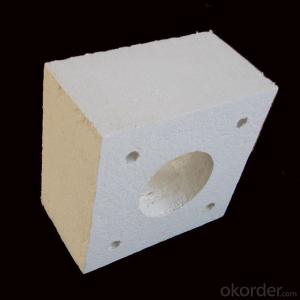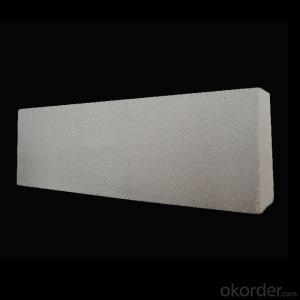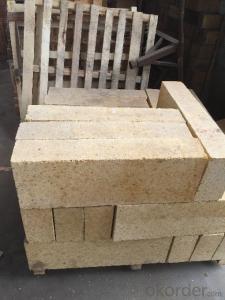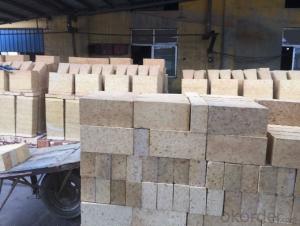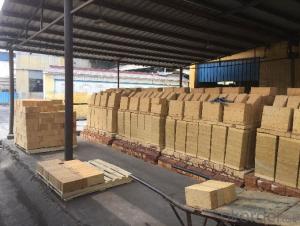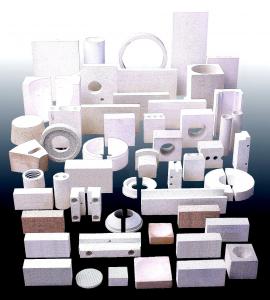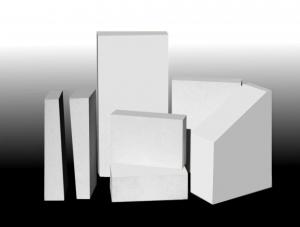Insulating Fire Brick 65% Al2O3 Min High Alumina
- Loading Port:
- China main port
- Payment Terms:
- TT or LC
- Min Order Qty:
- 100 pc
- Supply Capability:
- 2000000 pc/month
OKorder Service Pledge
OKorder Financial Service
You Might Also Like
65% Al2O3 Min High Alumina Insulating Fire Brick
High alumina insulating fire brick is a kind of insulation material adopting organic matter as ignition loss substance in order to increase the porosity of refractory, which has such advantages as high porosity, small volume density, good insulation effect, high mechanical intensity, small thermal conductivity and long service life. For various industrial kilns & furnaces, it is a kind of essential refractory for energy saving and temperature preservation.
This series of High Alumina Insulating Fire Brick are made of selected high alumina bauxite, kaolin caly, hollow microsphere as the mian material.By shaping at high pressure and sintering at high temperature.
Product Applications:
High alumina insulating fire brick are ideal for use in the below applications
Building materials for blast furnace
Building materials for hot-blast stove
Building materials for coke oven
Building materials for steel making furnace
For construction material in steel industry
For ladle
Product Advantages:
CNBM has success in its High alumina insulating fire brick due to their cost-effectiveness and excellent insulating properties. The refractoriness of magnesia chrome bricks are more than 2000°C, and the refractory under load is a above 1550°C.Good steady volume in high temperature, the performance of meeting sudden cold and sudden hot is better than magnesia bricks.
Main Product Features:
Excellent thermal stability
High refractoriness under load
Chemical stability and anti-corrision
Small high temperature creep rate
Excellent thermal shock resistance
Product Specifications:
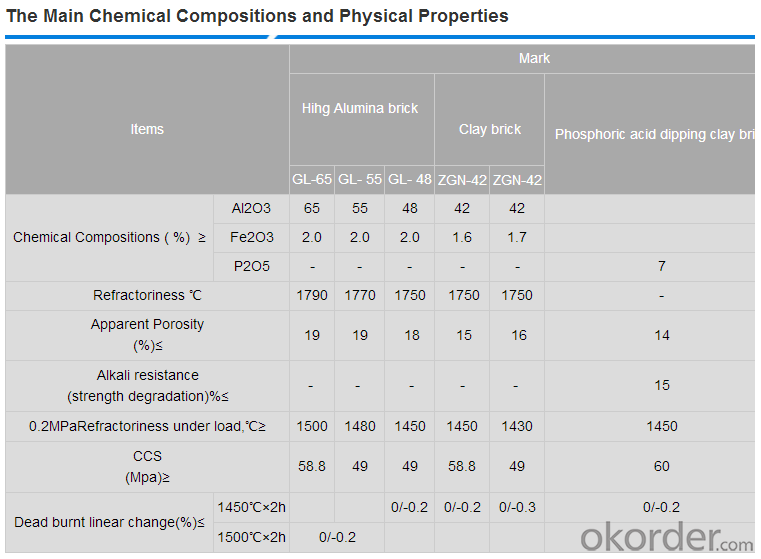
FAQ:
Q1: Are you a manufacture or trader?
A1: Factory+trade (mainly for manufacturing, also do some business of related products).
Q2: What's the MOQ of trial order?
A2: No limit,We can offer the best suggestions and solutions according to your requirements.
Q3: After an order is confirmed,when to deliver?
A3: According to your order quantity, normally, 15-25 days after deposit received.
Q4: Is your company accept customization?
A4: We have our own factories and excellent technical team, and we accept OEM service.
Product Picture
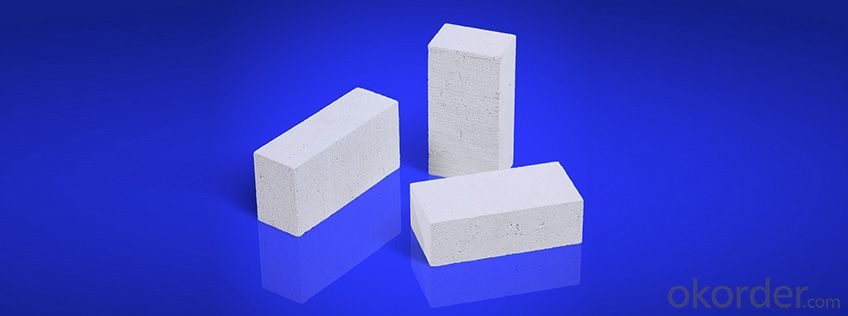
Produce Processing
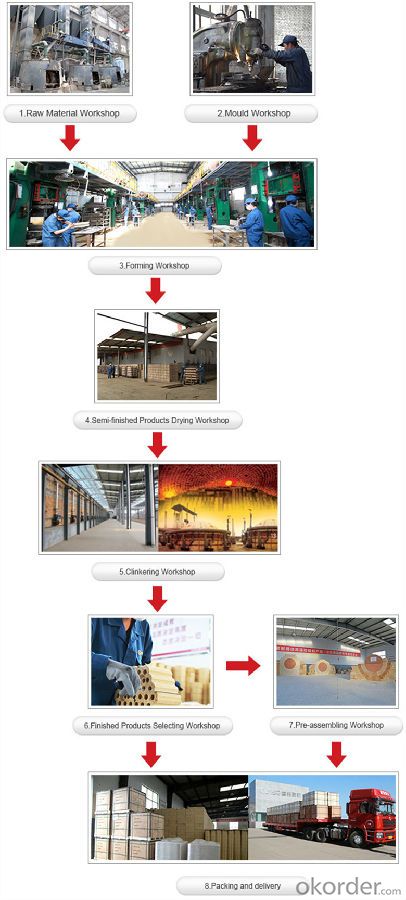
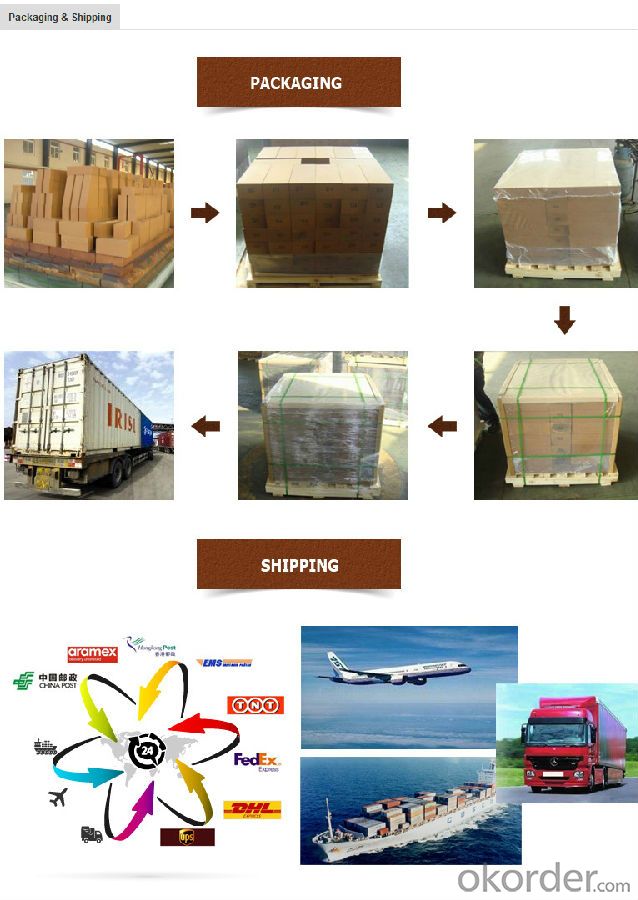
- Q: Can insulating fire bricks be used in ceramic kilns?
- Certainly, ceramic kilns can make use of insulating fire bricks. These bricks are specifically crafted to possess a minimal thermal conductivity, enabling them to better retain heat. Consequently, they prove to be an excellent option for lining the kiln walls, facilitating the conservation and uniform distribution of heat within the kiln chamber. Furthermore, these fire bricks are lightweight and possess exceptional resilience against thermal shock, rendering them highly durable and capable of withstanding the elevated temperatures commonly achieved in ceramic kilns.
- Q: Are insulating fire bricks suitable for use in coke ovens?
- Yes, insulating fire bricks are suitable for use in coke ovens. These bricks are designed to withstand high temperatures and provide excellent insulation properties, making them ideal for use in coke ovens where extreme heat is generated during the coking process. They help to maintain the desired temperature inside the oven and prevent heat loss, resulting in improved energy efficiency and reduced fuel consumption. Additionally, insulating fire bricks have good resistance to chemical reactions and thermal shock, which further enhances their suitability for use in coke ovens.
- Q: Do insulating fire bricks require any maintenance?
- Insulating fire bricks, also known as refractory bricks, have been designed to endure high temperatures and offer exceptional insulation properties. One notable advantage of these bricks is their minimal maintenance requirements. These bricks are crafted from specialized materials that exhibit high heat resistance and are not easily prone to cracking or breaking, thereby reducing the need for frequent repairs or replacements. Nevertheless, similar to other materials, insulating fire bricks may accumulate dust or debris over time. To preserve their effectiveness and extend their lifespan, it is recommended to regularly clean them by employing a soft brush or vacuum cleaner to eliminate any loose particles. Additionally, it is crucial to periodically inspect the bricks for any signs of damage, such as cracks or erosion. Promptly addressing any identified issues is vital to prevent further deterioration. In summary, although insulating fire bricks do not demand extensive upkeep, regular cleaning and inspection are essential to ensure their optimal performance and longevity.
- Q: Can insulating fire bricks be used in the construction of lime production linings?
- Yes, insulating fire bricks can be used in the construction of lime production linings. These bricks are designed to withstand high temperatures and provide insulation, making them suitable for lining furnaces and kilns used in lime production. They can help maintain the desired temperature, conserve energy, and improve the efficiency of the lime production process.
- Q: Are insulating fire bricks resistant to alkali-silica reaction?
- IFBs do not possess inherent resistance against alkali-silica reaction (ASR), which is a chemical reaction occurring between the alkalis from cement and reactive forms of silica found in aggregates. This reaction can result in the formation of a gel that expands and causes cracks in concrete structures. Although IFBs are typically constructed from refractory materials engineered to withstand high temperatures and thermal shock, they lack specific properties to combat ASR. The refractory material's composition and characteristics determine its resistance to ASR when used in IFBs. Should the refractory material utilized in an IFB contain reactive forms of silica like quartz or cristobalite, and there is exposure to alkalis, the possibility of ASR occurring exists. However, if the refractory material has a low content of reactive silica or contains additives that can mitigate ASR, the risk of ASR can be minimized. It is essential to recognize that the primary function of IFBs is to provide insulation in high-temperature applications, such as kilns, furnaces, and fireplaces. If ASR resistance is a crucial requirement for a specific application, it is advisable to consult the manufacturer or a materials engineer to determine the suitability of the IFB for that particular scenario.
- Q: Can insulating fire bricks be used in the construction of brick kilns?
- Yes, insulating fire bricks can be used in the construction of brick kilns. These fire bricks are designed to withstand high temperatures and provide excellent insulation, making them ideal for lining the walls and floors of brick kilns. They help to retain heat, improve energy efficiency, and protect the kiln structure from thermal stress.
- Q: Can insulating fire bricks be used in sewage treatment plants?
- Indeed, insulating fire bricks can find their application in sewage treatment plants. These bricks are specifically engineered to possess exceptional thermal insulation properties, rendering them suitable for high-temperature scenarios. Within sewage treatment plants, various processes necessitate the utilization of heat, such as anaerobic digestion or sludge incineration. Consequently, insulating fire bricks can be employed to encase the walls, floors, and roofs of incinerators or digesters, thereby facilitating the retention of generated heat and enhancing energy efficiency. Moreover, sewage treatment plants often confront corrosive and abrasive surroundings as a result of the presence of chemicals, acids, and solids within the wastewater. Notably, insulating fire bricks are forged from top-notch refractory materials, boasting resistance against chemical assault and erosion. This characteristic endows them with suitability for lining tanks, pipes, or other equipment that may come into contact with corrosive substances. Furthermore, owing to their lightweight nature, insulating fire bricks prove to be more manageable and straightforward to install in comparison to alternative types of refractory materials. This aspect can be particularly advantageous in sewage treatment plants where the need for frequent maintenance or repairs may arise. All in all, insulating fire bricks stand as a versatile and long-lasting choice for implementation within sewage treatment plants. They offer exceptional thermal insulation, resilience against corrosive environments, and ease of installation.
- Q: Can insulating fire bricks be used in the construction of lime production kilns?
- Yes, insulating fire bricks can be used in the construction of lime production kilns. Insulating fire bricks are designed to have excellent thermal insulation properties, which makes them suitable for high-temperature applications like lime production kilns. They can help in maintaining the desired temperature inside the kilns and reducing heat loss, enhancing the efficiency and productivity of the lime production process.
- Q: Can insulating fire bricks be used in hydrogen furnaces?
- Insulating fire bricks possess the capability to be utilized in hydrogen furnaces, although it is imperative to acknowledge that not all variants of insulating fire bricks are suitable for this particular purpose. Due to the highly reactive nature of hydrogen gas, certain materials can deteriorate or react, thereby giving rise to concerns regarding safety and potential harm to the furnace. When making a selection of insulating fire bricks for employment in hydrogen furnaces, it becomes crucial to opt for bricks that are explicitly designed for environments characterized by high temperatures and corrosive conditions. These bricks ought to be constructed from materials that exhibit resistance against hydrogen embrittlement and possess a low reactivity with hydrogen. Silicon carbide (SiC) and alumina-silica (Al2O3-SiO2) are frequently utilized materials for insulating fire bricks within hydrogen furnaces. These materials boast remarkable resistance to elevated temperatures and remain chemically stable when exposed to hydrogen. Moreover, it is of utmost importance to take into account the density and porosity of the insulating fire bricks. For hydrogen furnaces, it is preferable to employ bricks with low density and high porosity, as they offer enhanced thermal insulation and diminish the likelihood of hydrogen leakage. In conclusion, while insulating fire bricks can be employed in hydrogen furnaces, it is crucial to meticulously select the appropriate type of bricks that are specifically engineered for high-temperature and corrosive environments, and exhibit commendable resistance against hydrogen embrittlement and reactivity. Seeking consultation from specialists in the field and adhering to the guidelines provided by the manufacturer is highly recommended to ensure the safe and efficient operation of the hydrogen furnace.
- Q: Do insulating fire bricks require any curing before use?
- No, insulating fire bricks typically do not require any curing before use. They are ready to be used as soon as they are installed.
Send your message to us
Insulating Fire Brick 65% Al2O3 Min High Alumina
- Loading Port:
- China main port
- Payment Terms:
- TT or LC
- Min Order Qty:
- 100 pc
- Supply Capability:
- 2000000 pc/month
OKorder Service Pledge
OKorder Financial Service
Similar products
Hot products
Hot Searches
Related keywords
